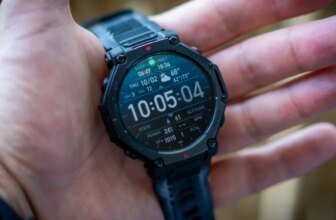LLMs Take the Helm in Simulated Space Ops
Insider Brief
- Researchers from MIT and Universidad Politécnica de Madrid demonstrated that large language models (LLMs) can autonomously operate spacecraft in simulated orbital scenarios using natural language inputs.
- Using GPT-3.5 and LLaMA-3, the team built AI agents that performed pursuit-evasion tasks in Kerbal Space Program, with fine-tuned models achieving superior accuracy and lower failure rates compared to classical and reinforcement learning baselines.
- The study highlights LLMs as a viable alternative for autonomous space operations, though challenges like response latency and hallucinations remain areas for future improvement.
In a case of researchers practically handing science writers 2001: A Space Odyssey references, a team of scientists found that large language models — LLMs — can now pilot simulated spacecraft with a level of accuracy that rivals classical control systems.
In a new study on arXiv that tests their performance in orbital maneuvers and using off-the-shelf AI models like GPT-3.5 and Meta’s open-source LLaMA, researchers from MIT and the Universidad Politécnica de Madrid have shown that these general-purpose systems, when properly prompted or fine-tuned, can act as autonomous spacecraft operators in high-stakes space scenarios, without the need for physics-based optimization or traditional reinforcement learning.
The findings suggest that language models could one day assist or even replace conventional algorithms in satellite rendezvous and collision avoidance — missions that are notoriously hard to simulate and automate. For now, the demonstration runs in Kerbal Space Program, a physics-rich simulation game used as a proxy for orbital mechanics. But the authors argue the implications extend well beyond virtual rockets.
LLMs vs. Traditional Control
The study centers on a public competition called the Kerbal Space Program Differential Games (KSPDG) Challenge, which pits autonomous agents against one another in scenarios such as satellite pursuit and evasion. These tests replicate space missions where two spacecraft engage in orbital maneuvers to intercept, evade, or guard one another. Unlike most artificial intelligence benchmarks, KSPDG is designed as a “true test set,” where agents are evaluated on novel conditions that can’t be overfitted or easily brute-forced.
Historically, spacecraft have relied on finely tuned control algorithms like PID controllers or model predictive control, often requiring precise models and simulation environments. Reinforcement learning — where an agent learns optimal behavior through trial and error — has gained traction in recent years but demands massive computational resources and hundreds of training runs, which aren’t feasible in many space applications. The KSPDG environment itself is ill-suited for reinforcement learning, as it doesn’t support fast, parallel simulation.
By contrast, language models sidestep these limitations. The MIT-led team engineered a framework where models like GPT-3.5 and LLaMA take in textual descriptions of the spacecraft’s state — such as positions, velocities, time and fuel — and generate commands in natural language, which are then translated into thrust actions within the game engine. The researchers avoided using explicit reward functions or dense simulation training and instead relied on prompt engineering, few-shot examples, and fine-tuned instructions.
Prompting and Fine-Tuning in Practice
The researchers tested two approaches to the challenge. One relied on clever prompt design and reasoning strategies, such as Chain of Thought (CoT), where the model is asked to reason through each step before issuing a command. Another involved fine-tuning the models on logs from human gameplay and scripted bots, essentially teaching the model to imitate successful strategies.
In the prompt-engineered setup, GPT-3.5 produced credible results using just one or two examples and a carefully worded system message explaining its mission. But the researchers noted limitations, such as occasional hallucinations, which is when the model outputs nonsensical or incorrect actions, and long latency times due to token generation.
To address this, the team collected about 50 gameplays from bots and humans, creating a dataset of observations and labeled actions. Fine-tuning GPT-3.5 with even a small subset of this data yielded performance gains, including reduced response time and better precision during close-range maneuvers. But more significant improvements came from using Meta’s LLaMA-3 model, which, unlike GPT, could be trained locally on custom hardware and tweaked extensively using optimization techniques like LoRA (low-rank adaptation) and Flash Attention.
Results and Rankings
The GPT-based agent secured second place in the KSPDG Challenge, outperforming classical reinforcement learning models such as Proximal Policy Optimization (PPO) and iterative game-theory planners. When fine-tuned, it achieved target proximities under 25 meters in all four pursuit-evasion scenarios, with failure rates dropping from over 35% to nearly zero.
After the competition, the researchers expanded their efforts with LLaMA-3. Despite being trained on consumer-grade GPUs, the fine-tuned LLaMA agents outperformed even the original bot that provided their training data, indicating the model was learning general strategies beyond simple memorization. The best LLaMA configuration — with 50 training files — achieved an average closest approach of under 12 meters and outperformed several traditional benchmarks.
Performance metrics included not only distance but also speed at closest approach, fuel usage, and time to intercept. While human pilots still outperformed the models in raw efficiency, the LLMs demonstrated strong reasoning and consistency without needing thousands of training hours.
Implications for Space and AI
While the use case is simulated, the researchers see a path toward real-world applications. In-orbit servicing, collision avoidance, satellite inspection and debris mitigation all involve decision-making under uncertainty and limited ground control. Language models, the researchers argue, offer a new paradigm: one where spacecraft can be steered using simple prompts and can understand mission goals without hand-coded logic.
The study also contributes to the growing field of language agents — AI systems that operate in physical or simulated environments using natural language. These agents blend the flexibility of general intelligence with task-specific data, potentially bridging the gap between conversational AI and robotics.
However, limitations remain. Latency is a major concern, especially for LLaMA models, which had slower response times than GPT due to smaller batch sizes and local hardware constraints. As mentioned, hallucinations — where the model outputs faulty commands — remain a risk, though they were mitigated by structured reasoning and fine-tuning.
There are also practical limits to LLM deployment in space. While language agents can interpret goals and plan actions, they currently lack awareness of system constraints like thermal budgets, hardware anomalies, or communications delays. The team acknowledges these gaps and suggests that future work could involve hybrid architectures that combine language models with physics simulators, domain-specific checks, or even traditional control loops.
What’s Next
The authors view their work as a starting point. Future studies could use richer simulation environments or real spacecraft telemetry to train more sophisticated agents. They also propose exploring model architectures with explicit reasoning modules or integrating reinforcement learning with language agents to get the best of both worlds.
The study, funded by the U.S. Department of the Air Force AI Accelerator and Spain’s regional science programs, also hints at a larger shift in how AI is applied to mission-critical systems. Rather than replacing engineers or codifying every possible condition, large language models may act as intermediaries — interpreting goals, suggesting actions, and learning from past outcomes in flexible ways.
For now, the mission is still virtual. But the results show that general-purpose AI, when given the right tools, can hold its own in orbit — even if the spacecraft is made of pixels.
“We find the results very satisfying. The spacegym integration, alongside the orbit generation and agent integration, demonstrated that Kerbal Space Program can be a great, yet simple, alternative as a simulation engine,” the team writes.
The researchers report that codebase is accessible on GitHub,while the trained models and datasets are available on Hugging Face. Experiment tracking and detailed results can be reviewed on Weights & Biases.
The paper is quite technical and is recommended for those readers who want a deeper look at the research than this summary story can provide. Scientists often use arXiv and other pre-print servers to distribute their work for feedback, however it is not officially peer-reviewed, a key step in the scientific method.
The research was conducted by Alejandro Carrasco, Victor Rodriguez-Fernandez, and Richard Linares. Carrasco and Linares are affiliated with the Massachusetts Institute of Technology, while Rodriguez-Fernandez holds dual affiliations with both MIT and the Universidad Politécnica de Madrid.







